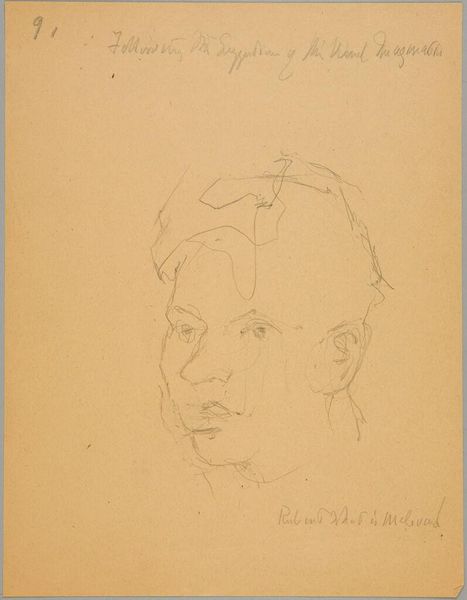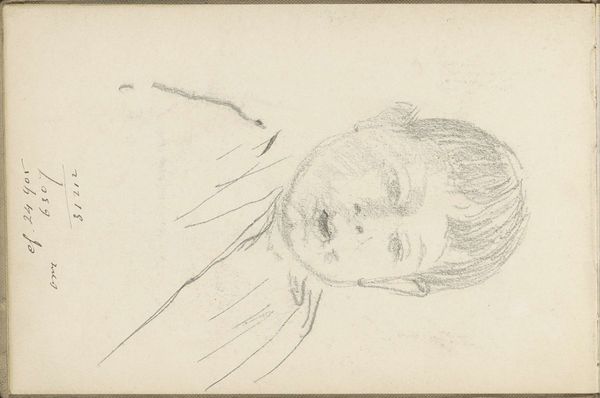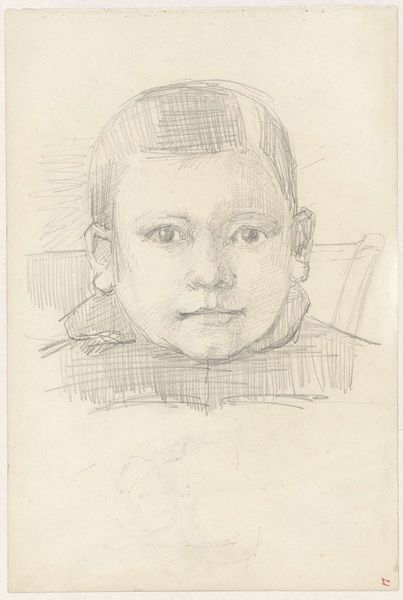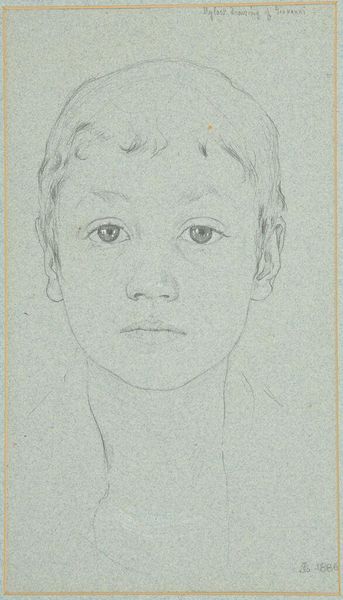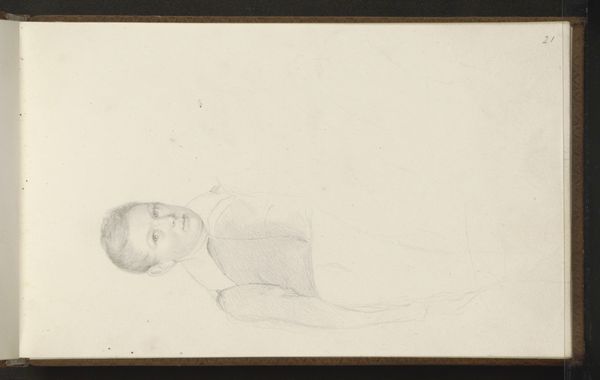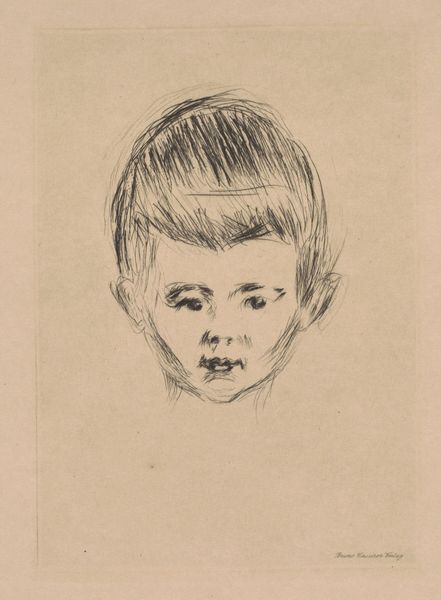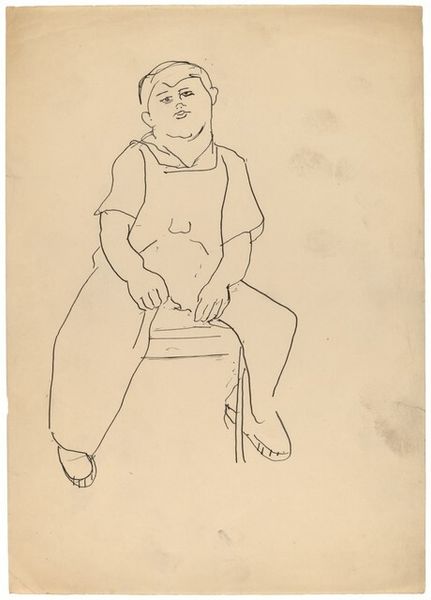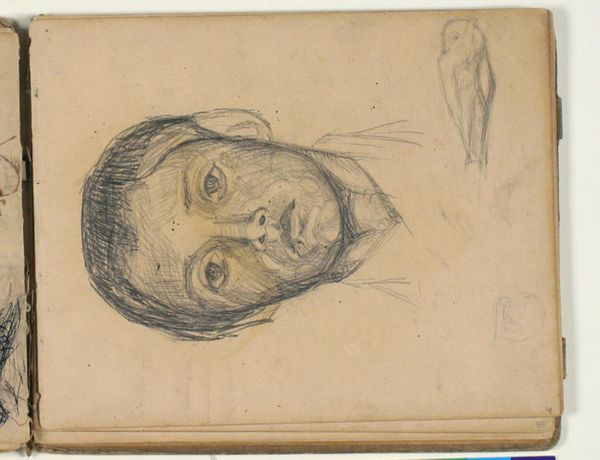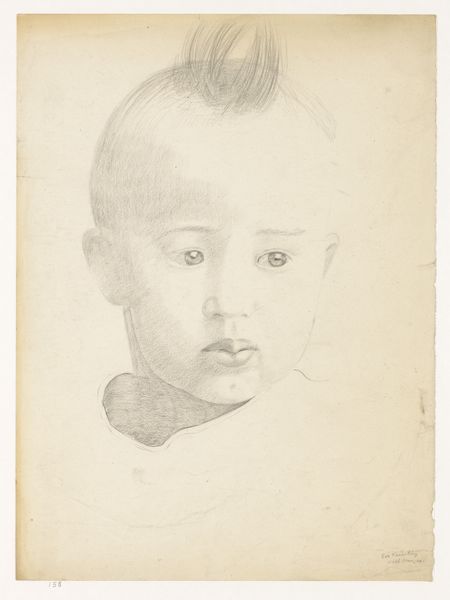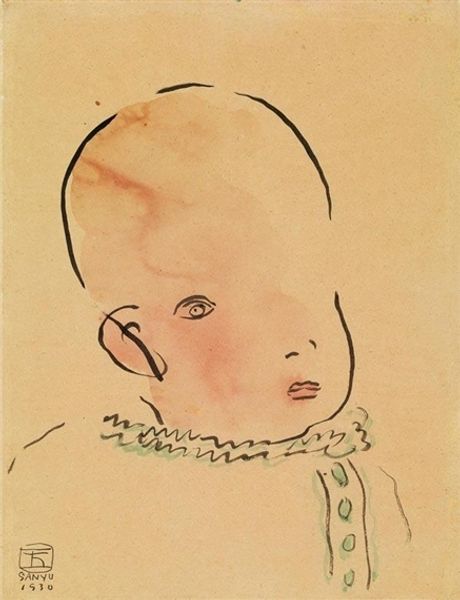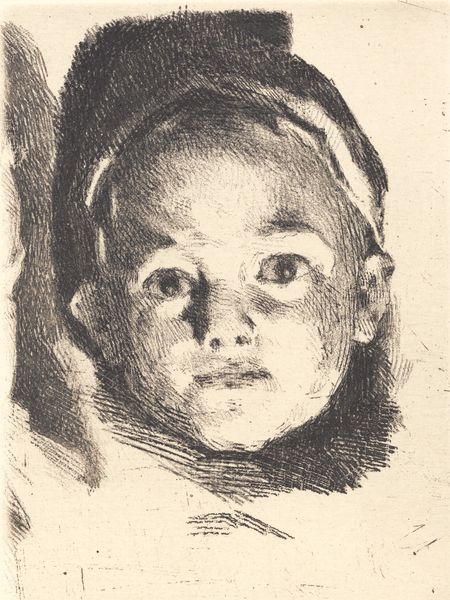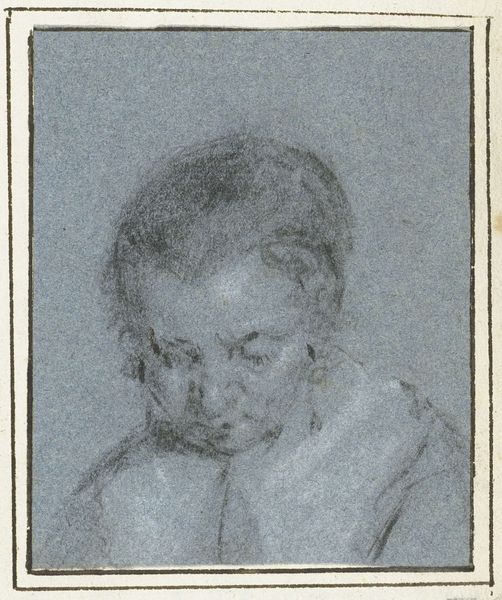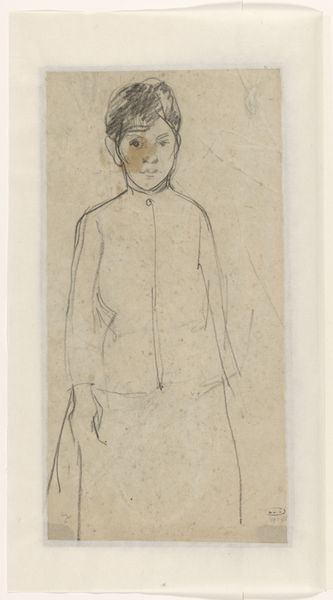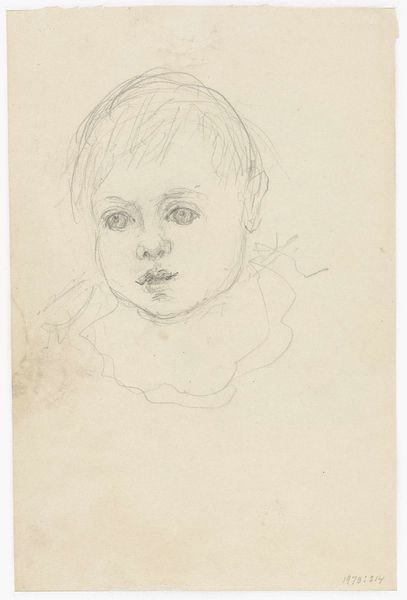
drawing, pencil
#
portrait
#
drawing
#
figuration
#
pencil
#
line
#
portrait drawing
#
post-impressionism
Dimensions: height 167 mm, width 105 mm
Copyright: Rijks Museum: Open Domain
This portrait of a young boy in Tahiti was made by Paul Gauguin, likely using a simple graphite pencil on paper. It's a quick study, focusing on capturing the boy's likeness and the fall of light on his face, all achieved through the direct application of graphite to paper. The very directness of drawing implies an intimacy between artist and model. Gauguin's choice of such a humble material and technique highlights the simplicity of life in Tahiti, contrasting with the industrialised world he left behind in France. The use of graphite allows for a range of tones and textures, from the soft shading of the boy's face to the sharp lines defining his features. It’s also a quick way to represent the boy without the use of complicated techniques. The visible strokes and erasures also provide a direct connection to the artist's hand and creative process, a raw immediacy that is so unlike the paintings he is known for. Ultimately, the power of this drawing lies in its simplicity. It challenges the traditional hierarchy between fine art and craft, inviting us to appreciate the beauty and skill that can be found in the humblest of materials.
Comments
No comments
Be the first to comment and join the conversation on the ultimate creative platform.
